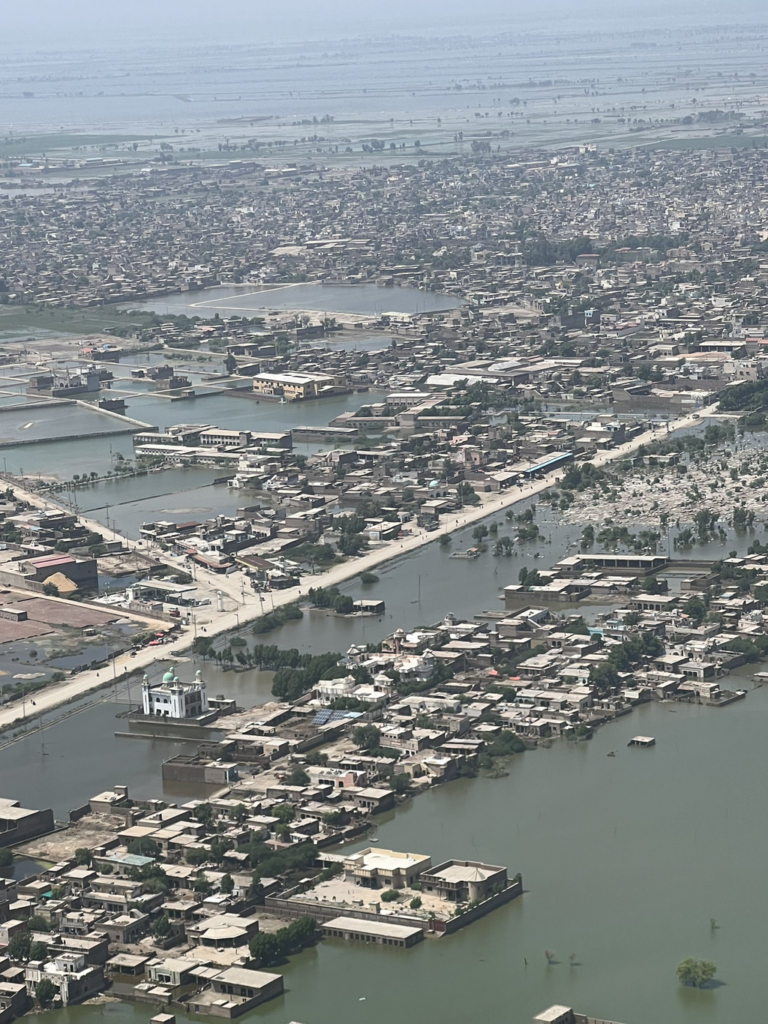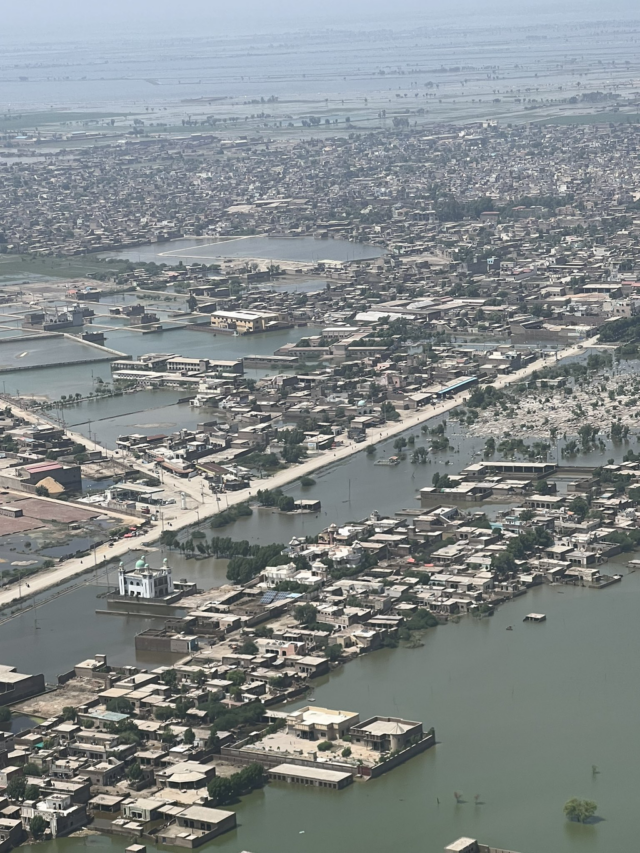You only have to recall the series of recent climate extremes – devastating monsoon floods in Pakistan, coastal and urban inundation from Hurricane Ian’s deluge, storm surges across the Caribbean and North America, and ongoing famine-inducing drought in Somalia – to know that the planet is already experiencing climate change and that it is damaging societies and the ecosystems upon which we all depend.

We have already warmed the planet by over one degree Celsius since the beginning of the Industrial Revolution through emissions of greenhouse gases, mostly from burning of fossil fuels. And every additional bit of future warming will continue to increase the severity of flooding and drought events, when and where they occur.
Floods and droughts are a natural part of the global water cycle. Their occurrence is determined by fluctuations in weather and climate patterns. Too much water at once or a lack of fresh water over one or many seasons is enough to disrupt the threads of society.
A steady, dependable supply of fresh water is required for our domestic, agricultural and industrial needs while keeping our homes and infrastructure safe. A lack of rainfall can dry the surface and deplete our water butts, but sustained over weeks and the soil begins to dry out, rivers and reservoirs shrink, and eventually plants and crops wilt and die.
On the other hand, intense rainfall can run off rather than infiltrate the soil, leading to flash flooding. Sustained, heavy rainfall can cause rivers and lakes to overtop their banks.
Add onto this the state of the ground before an extreme event – the type of rock, terrain and vegetation and how wet or dry the soil is – and factor in melting ice or snow to the mix, and flooding becomes a complicated picture.
Despite the complexities of what determines floods and droughts, there is sound physics that explains why climate change will make them both worse.
As the planet warms, the air is able to carry more water in its gaseous, invisible form, water vapour.
The atmosphere becomes more thirsty and is able to suck water from the oceans and sap moisture from the soil more effectively over some regions, while this water is transported by the winds into monsoons and storm systems, fuelling a greater intensity of precipitation in other regions.
This means that when a drought – or a flood – occurs in a heated world, the severity is intensified by the more rapid movement of water away from one region and into another.
Previous moderate extremes are promoted to premier league extremes while already severe events become unprecedented – elevated into a super league all of their own, which of course no one wants.
The situation is even more dire when you consider compounding effects – multiple catastrophes that strike one region repeatedly or multiple regions at the same time. As we saw recently with Hurricane Ian or the Pacific Typhoon Noru, coastal inundation from storm surges can combine with flooding from heavy and sustained rainfall.
A flip between drought and flood can also make bad situations worse; an example was the intense rainfall, wind and storm surges from multiple, successive tropical cyclones that struck Madagascar between January and April this year. This followed a period of drought which caused what the UN described as potentially the “world’s first climate change famine” and left populations critically vulnerable.
Equally worrying for global food supply, future events could attack in multiple waves, hitting breadbasket regions at the same time with simultaneous droughts, floods or heatwaves.
As well as making people vulnerable, drought can prime the environment for related problems. Parched ground can amplify heatwaves, as there is no moisture to soften the force of the sun’s relentless rays which are instead focused on heating the ground and the air above.
Dry vegetation combined with hot but windy conditions can also spark or worsen wildfires, the destructive capacity of which has been witnessed over past years across North America, Europe and China, for example.
The constant supply of news documenting unprecedented flooding and drought events add to a wealth of published scientific evidence pored over in four years of scrutiny as part of the Intergovernmental Panel on Climate Change’s sixth assessment report.
Of the 45 regions of global land, 19 have already shown an increase in heavy rainfall since the 1950s while 12 have seen an increase in agricultural drought conditions. This picture is expected to spread and intensify in the future.
The IPCC’s Summary for Policymakers, instrumental in the Glasgow COP26 climate negotiations, stated: “Projected changes in extremes are larger in frequency and intensity with every additional increment of global warming.”
A recent study by the University of Reading provides an example of where the future is already here, with projected intensification of the tropical dry season already evident in satellite observations for some regions such as Brazil, southern Africa and Australia.
Over parts of Brazil and southern Africa, dry spells in the dry season have been getting about a day or two longer every ten years; by the end of the century they could be as much as five to ten days longer, without the rapid, substantial and sustained cuts in emissions of greenhouse gases required to limit climate change to below 2C of warming.
Until we reach a net-zero world where any emissions are balanced by uptake by the land and ocean, the world will continue to warm, and flood and drought events will worsen to progressively deplorable levels.
As well as mitigation of climate change, adaptation to the inevitable is essential. The catastrophic flooding in Germany and neighbouring countries highlighted the unacceptable situation where warnings of danger aren’t communicated even though the data is available and ready to be used to protect lives.
However, it is irresponsible to argue that we are past the point of no return, as the world approaches one of thresholds laid down at the Paris climate agreement, 1.5C of warming relative to pre-industrial times.
Although it is still possible to limit warming to these levels in the long term, through joined-up policy action across countries, it remains a fact that every bit of warming will make extreme events worse. And similarly, every bit of additional warming avoided and every bit of resilience built into our societies will help to limit the cost of climate change on our health, wealth and ecological wellbeing.
Richard Allan is Professor in Climate Science in the Department of Meteorology at the University of Reading.
This article is republished from The Scotsman.

